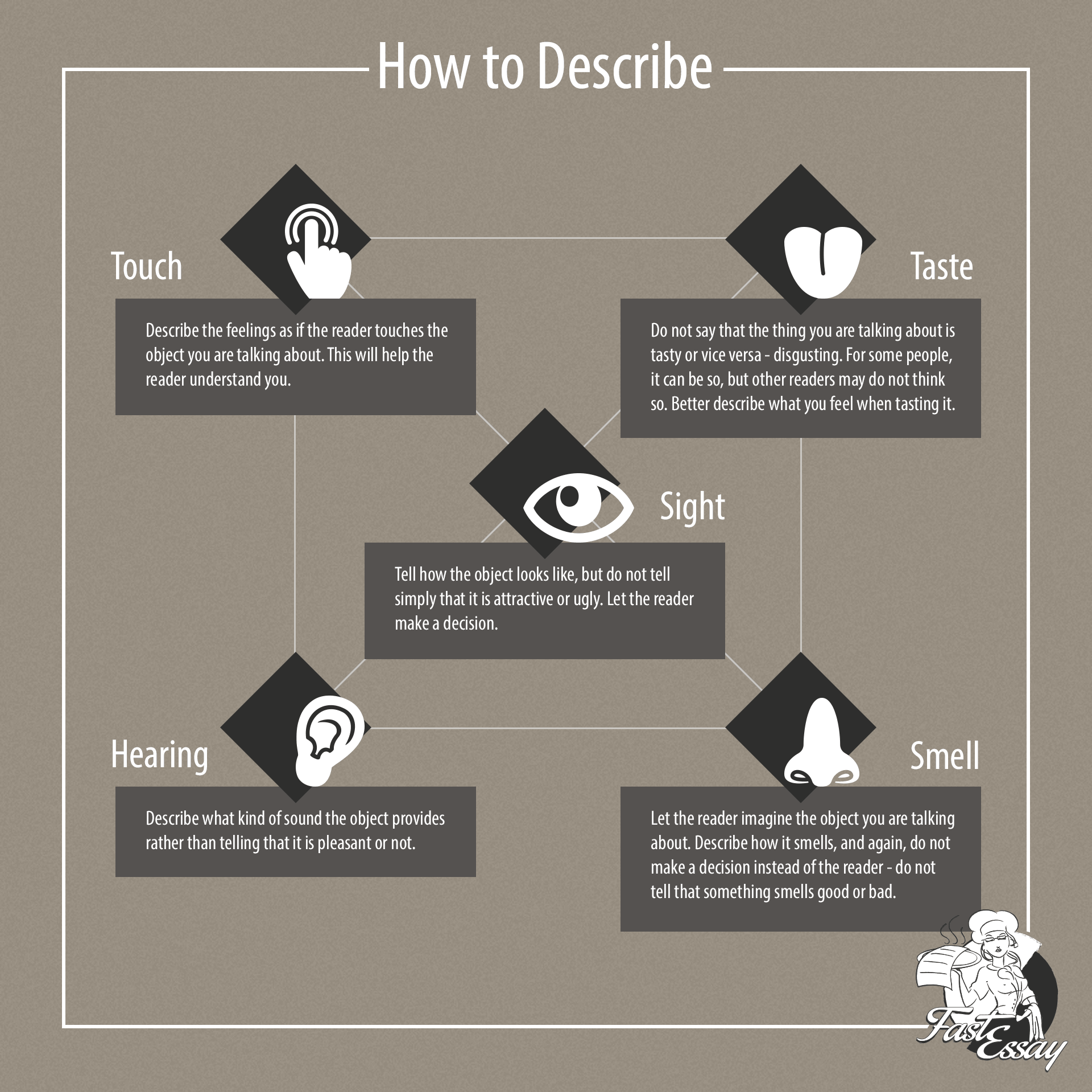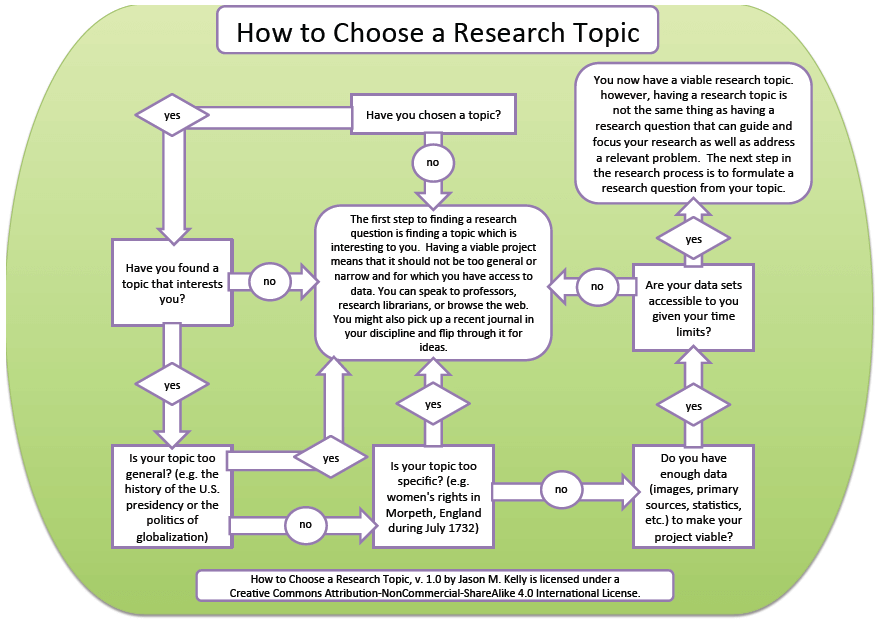So many essays, so little differences. That is exactly what can be said about a descriptive essay if compare it with a narrative one. Those kinds of academic writing are usually confused by most of the freshmen.
Descriptive vs. Narrative: Inherent Features
The title of a descriptive essay speaks for itself. If the narrative essay requires a plot building and some interactions between characters, this paper is all about a picture of a place, event, person or some other things. There can be no explicit storyline but lots of bright passages appealed to human feelings and senses.
Writing the Descriptive Essay: Where to Start
Before you actually start writing, you should thoroughly prepare for it to simplify your work and make it less time-consuming. The preparation phase consists of 3 crucial parts:
1. Topic's Choice
The first step is very subsequent. You should select such an issue that will be:
- Interesting for both you and the potential reader;
- Intriguing enough to grab the attention of everyone who is keen on this field of study;
- Easy for understanding and as narrow as possible;
- Well known and enjoyable for you personally.
Also, make sure that you already have or are able to find relevant information on it on the Internet. Sometimes, students get down to a case which is no more topical.
The theme of the descriptive essay may cover only one object whether it is a person, place or an emotion. Pick only specific things up or people which are important to you and are a matter of your feelings. Otherwise, the picture will not be as vivid as it could be.
2. Gathering the information
The second stage of the preparation implies systemizing the information you already have about the chosen object and studying the requirements for writing at the same time. Divide the sensory details into a few categories including each of five senses. It would be convenient to make a list in form of 5 columns table. For better understanding, let’s provide you with some examples of the possible descriptive senses.
Imagine you are writing about the room you lived in the childhood:
- Sound: “Floorboards always cracks when somebody comes in.”
- Vision: “Warm tint of wooden furniture keeps it warm.”
- Smell: “The scent of fresh grandma’s pastries is coming from the kitchen.”
- Touch: “The carpet near the bed is soft as silk.”
- Taste: “My Christmas gifts always contained milk chocolate candies with a sweet taste.”
There are usually no specific demands for such kind of essay, but sometimes a professor can identify an object and its particular features to describe.

3. Outlining the essay
And thirdly, make an outline of your future essay. It shows the main ideas of your paper and automatically puts them in order by allocating the structure. There are few outlining techniques which can help you:
- Mind mapping;
- Scene cards;
- Tree-like structure etc.
Revealing the Idea
Any essay-looking paper includes three sections: introduction, body (3 paragraphs) and conclusion. In the descriptive essay, it is most welcome to mark the 3 paragraphs as follows: least important point, second least important point, and the key point to impress the reader for the last. Then, move on further.
Creating a Strong Thesis Statement
A thesis statement is an integral part of any academic paper and should be mentioned in the introduction and restated in the conclusion. A descriptive one is not an exception.
Introduction
Here in such a type of writing the author is getting the audience up to speed. Start this paragraph with a hook as usual and introduce the event which is going to be described. Also, here you may provide the reader with the short background or backup information. The general facts about the topic should be submitted in a descriptive language with mentioning all five sense details without deepening into a whole point of it.
Main Body Part
Do everything for reader’s understanding of your feeling. Describe an event or a thing in the most compelling way to attract the audience. Adhere to the underlying rules:
- Use memorable adjectives such as “tremendous” instead of “big” or “mouth-watering” instead of “tasty”. It is the only essay where you can allow yourself to use not very formal or academic word combinations;
- Make your narration more metaphorical and use similes. For instance, you can say that your granny’s dishes were like manna from heaven after an exhausting school day. Or, make a bright comparison: "I loved my granny's pastries like Homer Simpson loved doughnuts";
- Bring your paper to life by describing your feelings and emotions about the event, person or thing at that moment when you got the experience dealing with it.

Pulling Everything Together
Summarize all your thoughts in the conclusion by repeating the thesis statement and a strong final sentence. Don’t say anything new in this part.
Polishing the Text: Editing and Proofreading
While editing appeals to changing the structure, sentences or some details in the paper's plot, procreating is more about occasional grammar and formatting errors. If you are still not sure whether you corrected all the mistakes, ask your friend or relative to proofread it. Or, digress from the text and try to check it again tomorrow’s morning.
In the case when you need to finish your paper quickly, change the look of the document, print your copy or divide the whole essay into several parts and edit each of them separately. Put your tasks into a strict order: the most important should come first.
Descriptive essays are full of fun if compare with such serious assignments as coursework or dissertation. Sit back and show one of the most exciting feelings you ever experienced in the paper. This process is quite creative and pleasant, so enjoy!


